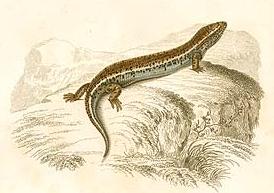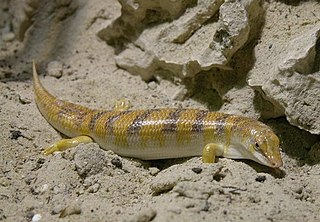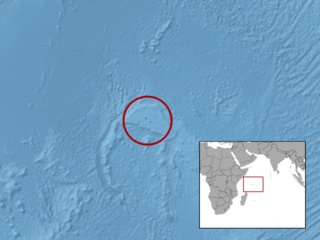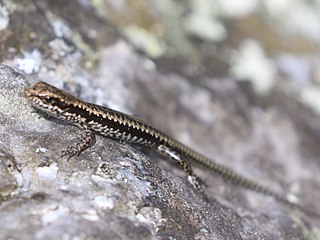
Amphiglossus is a genus of skinks, lizards in the family Scincidae.

Anomalopus is a genus of worm-skinks, smallish smooth-scaled burrowing lizards in the family Scincidae. The genus is endemic to the eastern half of Australia. The genus belongs to a clade in the Sphenomorphus group which contains such genera as Ctenotus and the close relatives Eulamprus and Gnypetoscincus.

Ateuchosaurus is a genus of skinks, lizards in the family Scincidae. The genus contains only two species which are indigenous to East Asia and Southeast Asia.

Brachymeles is a genus of skinks. The majority of the species within the genus are endemic to certain island ecosystems in the Philippines. In 2018, the Zoological Society of London through its EDGE of Existence Program listed the Cebu small worm skink as the 80th most evolutionarily distinct and globally endangered reptile species in the world, making it the most endangered member of the genus Brachymeles.

Chalcides is a genus of skinks.

Egernia is a genus of skinks that occurs in Australia. These skinks are ecologically diverse omnivores that inhabit a wide range of habitats. However, in the loose delimitation the genus is not monophyletic but an evolutionary grade, as has long been suspected due to its lack of characteristic apomorphies.

Eugongylus is a genus of skinks in the subfamily Eugongylinae. It was previously recognised as namesake of the Eugonglyus group of genera within Lygosominae, where it occupied a quite basal position. Members of this genus are commonly called mastiff skinks or short-legged giant skinks.

Eulamprus is a genus of lizards, commonly known as water skinks, in the subfamily Sphenomorphinae of the family Scincidae. The genus is native to Australia.
Feylinia is a genus of skinks. It is usually placed in the monotypic subfamily Feylininae.

Lampropholis is a genus of skinks, commonly known as sunskinks, in the lizard subfamily Eugongylinae of the family Scincidae. The genus Lampropholis was previously found to belong to a clade with the genera Niveoscincus, Leiolopisma and others of the Eugongylus group within Lygosominae. All species of Lampropholis are endemic to Australia. For similar skinks see genera Bassiana, Pseudemoia, and Niveoscincus.

Lipinia is a genus of skinks, lizards in the family Scincidae. Species in the genus Lipinia are commonly called lipinias.
Paracontias is a genus of skinks, lizards in the family Scincidae. The genus is endemic to Madagascar.

Scincus is a genus of skinks, lizards in the family Scincidae. The genus contains four or five species, all of which are typical desert inhabitants, living in sandy and dune-like areas with a hot and dry climate. Species in the genus Scincus can be found from Arabia to the Sahara desert.
Sepsina is a genus of skinks. The genus is endemic to southern Africa.

The genus Sphenomorphus – vernacularly also known as the common skinks – currently serves as a "wastebin taxon" for numerous skinks. While most or all species presently placed here are probably rather close relatives, the genus as presently delimited is likely to be not monophyletic and is in need of review. Some species in this genus have been moved to Pinoyscincus.

Brauer's burrowing skink, also known commonly as Brauer's skink, is a species of lizard in the family Scincidae. The species is endemic to the Seychelles.

Vesey-Fitzgerald's burrowing skink is a species of lizard in the family Scincidae. The species is endemic to the Seychelles.

Gardiner's burrowing skink is a species of lizard in the family Scincidae. P. gardineri is the only species in the (monotypic) skink genus Pamelaescincus. The species is endemic to the Seychelles.

Saiphos equalis, commonly known as the yellow-bellied three-toed skink or simply three-toed skink, is a species of burrowing skink found in eastern Australia. It is the only species classified under the genus Saiphos.

Concinnia is a genus of skinks in the subfamily Lygosominae.
















